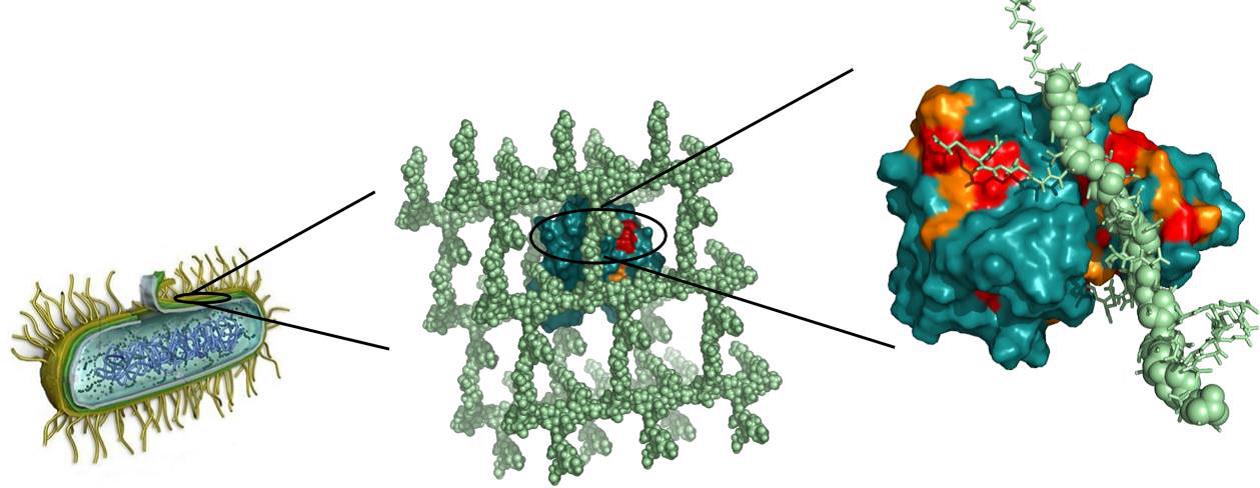In addition to a “traditional” cell membrane, bacteria are enveloped by a rigid cell wall that dictates their shape1 and maintains their integrity. This wall is formed by a network of polymers, in which the principal one, peptidoglycan, is present in all bacterial species. Since the discovery of penicillin, a large number of antibiotics have acted by blocking the assembly and cross-linking of peptidoglycan. Faced with the growing resistance of pathogens, a detailed understanding of the cell wall’s synthetic mechanisms has become necessary to find targets for new antibiotics. However, this wall, which is as complex as it is diverse, remains out of reach of classical structural biology methods. A team2 from the CEA-IBS has solved this problem with a recent technique, solid-state NMR spectroscopy.

Structure
of the transpeptidase bound to the intact peptidoglycane
The researchers were intrigued by the L,D-transpeptidase of Bacillus subtilis, an enzyme that catalyzes the linkage of two crossed strands of the peptidoglycan, thus resulting in the “meshing” of the network. After introducing the transpeptidase and the intact peptidoglycan to prove that they tightly bind, the researchers resolved the structure of the enzyme-substrate complex at the atomic level. This step provided details about the binding, and identified two particularly important amino acids3. With this structure in hand, the researchers were then able to create a realistic in silico model of the cross-linking reaction. Now they want to tackle this subject in pathogenic bacteria, particularly Mycobacterium tuberculosis, the causative agent of tuberculosis; several strains of this bacterium have acquired an alarming resistance to antibiotics.
- For example, spherical (cocci), rod-shaped (bacilli), or spiral.
- the biomolecular NMR group
- the building blocks of proteins